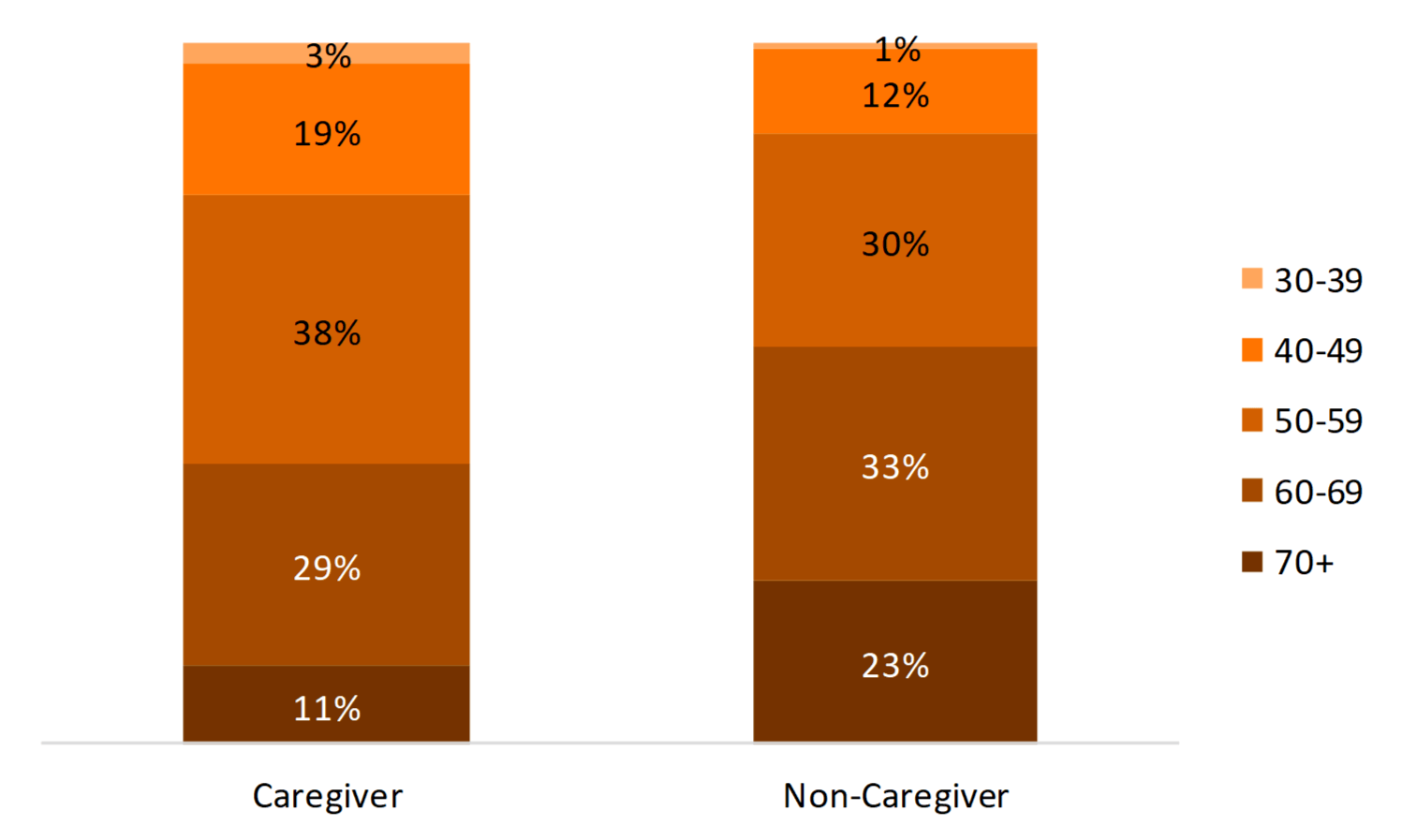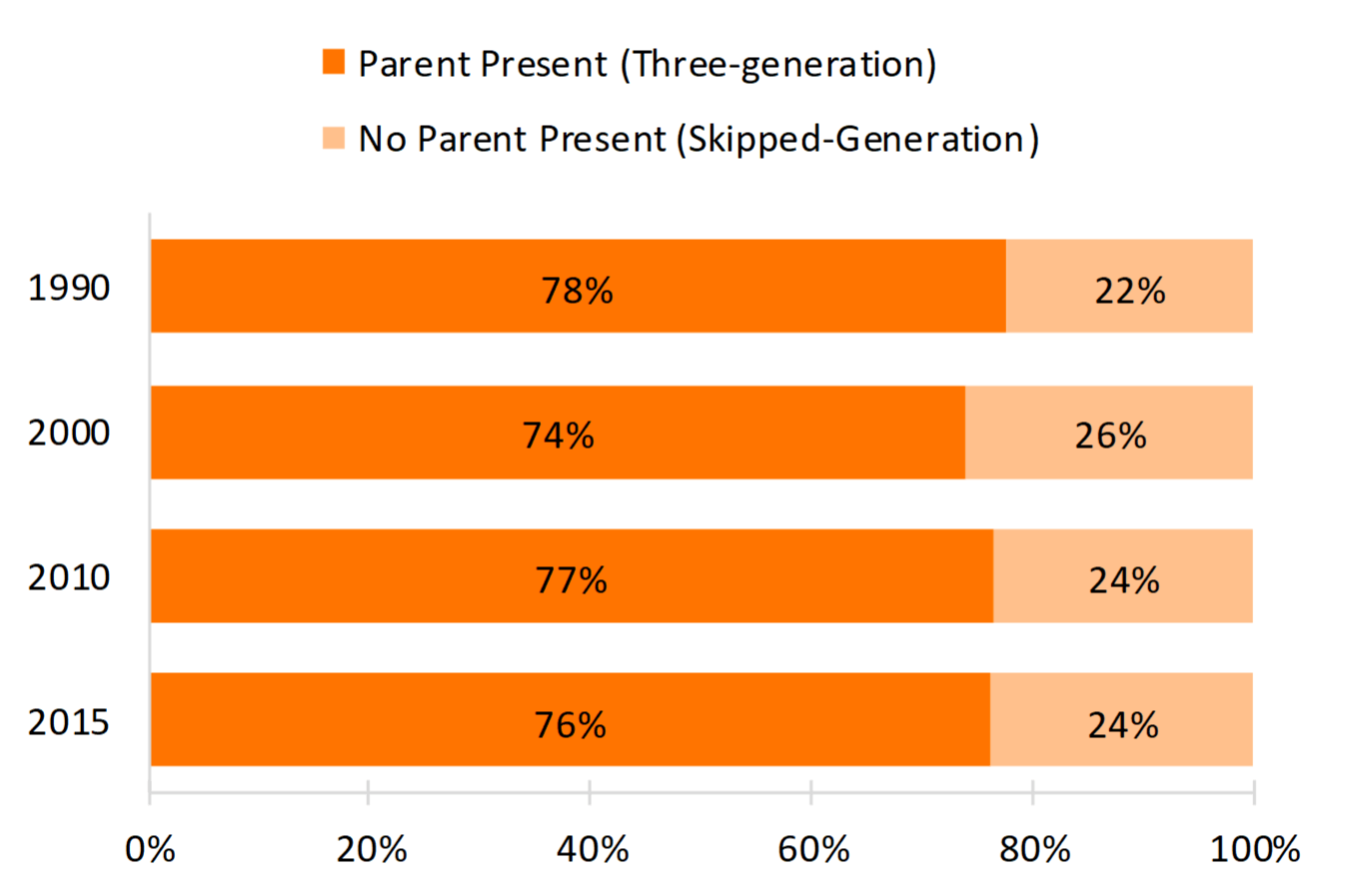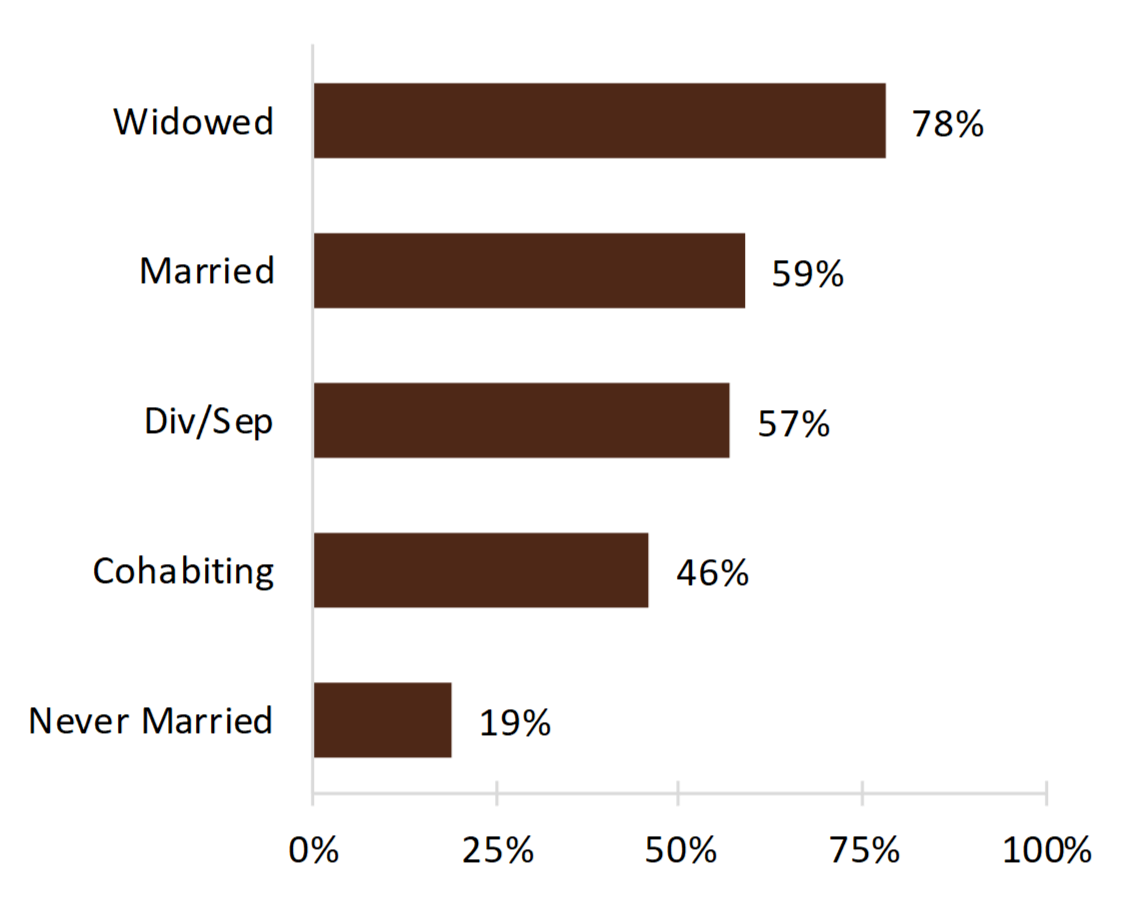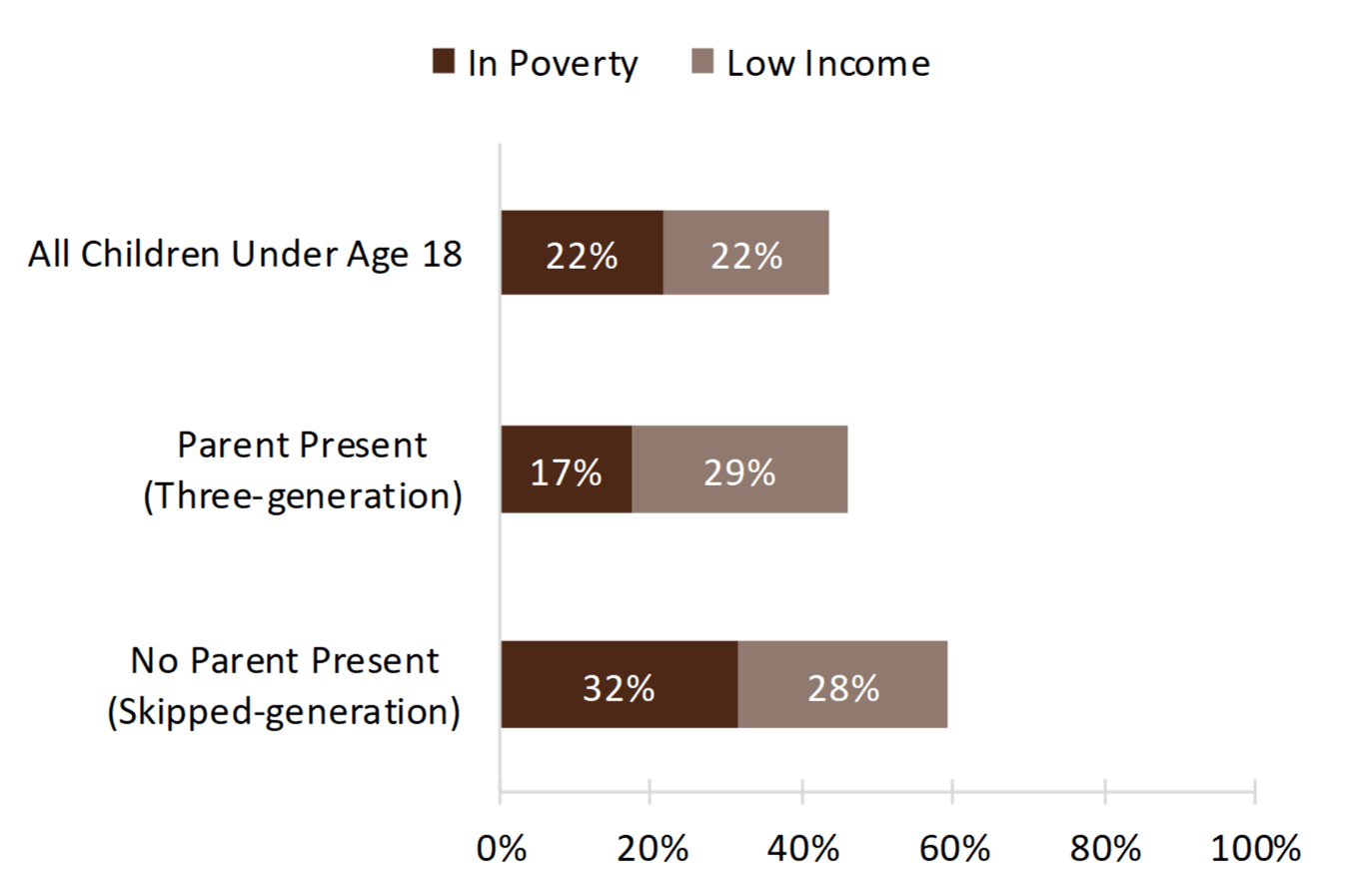Coresident Grandparents: Caregivers Versus Non-Caregivers
Family Profile No. 2, 2018
Author: Huijing Wu
In 2015, over 72 million individuals were living with at least one grandchild (coresident grandparents). Not all, but many coresident grandparents fill the role of caregiver to their resident grandchildren. Among coresident grandparents, 36% were caregivers—a slight decrease from 39% in 2010 (FP-12-18). Using data from the American Community Survey, this profile updates FP-12-18 to examine coresident grandparents and their responsibility for grandchildren by grandparents’ age and poverty status as well as how long they have been responsible for their grandchildren. We also examine changes in household structure among grandparent caregivers between 2005 and 2015.
Age Distribution of Grandparent Caregivers vs. Non-Caregivers
- Grandparent caregivers are younger than non-caregivers, with a median age of 57 and 61, respectively (not shown). Nearly one-fourth (23%) of caregivers were younger than 50 compared to only 13% of grandparent non-caregivers.
- Only about one-tenth of grandparent caregivers were aged 70 and older. However, nearly one-quarter of grandparent non-caregivers were aged 70 and older.
Figure 1. Grandparent Caregivers vs. Non-Caregivers by Age Groups, 2015

Economic Disadvantage of Grandparent Caregivers vs. Non-caregivers
- A larger share of grandparent caregivers was economically disadvantaged than non-caregivers. Among grandparent caregivers, 47% were living in poverty or in a low-income household compared to 36% of grandparent non-caregivers.
- The discrepancy was driven by the disproportionate share of grandparent caregivers who were living in poverty—20%versus 12% among their non-caregiving counterparts.
Figure 2. Grandparent Caregiver vs. Non-Caregivers by Economic Disadvantage, 2015

Grandparent Caregivers’ Duration of Responsibility
- It is most common for caregiving grandparents to have engaged in this role for five years or more. Two in five (42%) grandparent caregivers reported they have been responsible for the care of their grandchildren at least five years.
- One in five (20%) grandparent caregivers have been responsible for less than one year.
Figure 3. Grandparent Caregivers' Duration of Responsibility, 2015

Grandparent Caregivers by Household Types
- Most grandparent caregivers, at least three out of five, were living with their grandchild and the grandchild’s parent (three-generation household). Between 2005 and 2015, there were modest changes.
- In 2005, 39% of grandparent caregivers lived with their grandchildren in a skipped-generation household (e.g., the grandchild’s parent was not present in the household). This percentage declined to 32% in 2010 but increased slightly to 35% in 2015.
Figure 4. Grandparent Caregiver by Household Types in 2005, 2010, & 2015

Data Source
- Steven Ruggles, Katie Genadek, Ronald Goeken, Josiah Grover, and Matthew Sobek. Integrated Public Use Microdata Series: Version 7.0 [dataset]. Minneapolis, MN: University of Minnesota, 2017. https://doi.org/10.18128/D010.V7.0
References
- Wilson, B. (2012). Coresident Grandparents: Caregivers Versus Non-Caregivers. Family Profiles, FP-12-18. Bowling Green, OH: National Center for Family & Marriage Research.
Suggested Citation
- Wu, H. (2018). Coresident grandparents: Caregivers versus non-caregivers. Family Profiles, FP-18-02. Bowling Green, OH: National Center for Family & Marriage Research. https://doi.org/10.25035/ncfmr/fp-18-02
Updated: 11/12/2025 10:19AM


